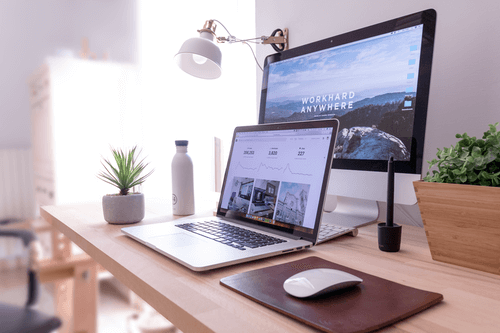Due to the popularity of minimalist website design, graphic design is more important than ever. However, the focus on graphics over layout means a profound proportion of website data must be loaded before a web page is displayed and as a result, the dangers of slow website speeds are a fast-growing risk.
Quick-loading, responsive websites must be as high a priority as appealing web design if you want success online. Regardless of your website aesthetic, if your site is slow to load and inconvenient to use you won’t retain website traffic. Thus, image optimisation is a pivotal element of contemporary web design. The best ways to optimise an image heavy website without ruining its visual appeal?
Whether your website is an e-commerce store, fashion portal, or food blog these 3 crucial hacks will ensure your image heavy website is optimised and fast-loading for good customer retention.
Scaled Down Images
This tip is essential. It’s impossible to over-emphasise how much the size of your images can harm your website speeds. A lot of website editors overlook the detail in their image sizing and reduce the website’s performance in the process. For example, if you want to display an original image on your fashion blog measuring 4000 x 3000px, the loading time of the web page will be significantly slower.
More from Guides
- Top Alternatives To Dropbox
- How to Use AI to Create Investor Reports
- Can You Measure Productivity Objectively?
- What Do I Need To Do To Use A Payroll System?
- Why Professional Printing Services Can Be Important For Business
- Mental Health At Work: HR’s Role In Supporting Employees
- 10 Ways AI Is Changing What Talent Looks Like in Commodity Markets
- Best Alternatives To WhatsApp
In fact, the actual image size displayed will be much smaller than the original dimensions anyway, so scaling down won’t affect your website aesthetic.
To optimise the size of your images two key things to keep in mind are:
Firstly, any adjustments made in HTML or CSS will be ineffective. When you work in HTML or CSS each file is uploaded before it is resized so it will still consume the same amount of space on the cache after you make changes.Instead, resize images on the server then send them to the browser. Secondly, pay regular attention to your website’s visual layout. As startup websites mature, the addition of further content shrinks the space left for images so you’ll find your graphics need to be re-scaled over time.
Select The Right Image Quality
It may come as a surprise that your images do not have to be high definition standard for a website. Optimise the quality of your visuals to prevent them from slowing down your website. Images displayed in high definition will cause your web pages to load slowly. A good way around this is to use one of the many extensions available with excellent image compression features. An easy way to check the quality of the image produced is to import the image in different formats and see which one takes up the least amount of storage.
Most of these extensions are compatible on web browsers and easy to use.
Build Images For Mobile Displays
Mobile technology has come on in leaps and bounds, however when it comes to page speeds and display quality, internet loading times are slower on mobile.Ensure your web design is optimised for mobile with responsive imagery. Responsive images need a website layout that can adapt to different screen sizes. Update your database with different image sizes. Your layout specifications will ensure there are a range of choices available when it comes to selecting the best dimensions for the display of your images..
Content by CB Web Design



